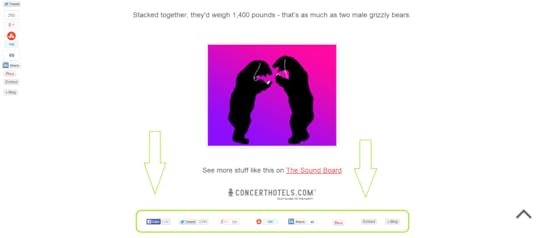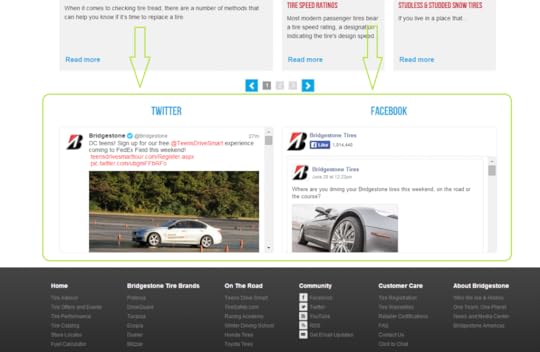3 Ways to Optimize Your Content for Successful Social Media Engagement

Great content is the key to most branding today — increasing traffic, cementing your reputation as an expert, and spreading brand awareness. But great content is only as great as its distribution methods. It won’t do much, after all, if it just hangs out on your website looking pretty. It needs to be read, shared, and deeply engaged with — and social media is exactly the right place to generate all three of those activities.
It needn’t be a difficult feat, either. In fact, if you look to the left hand side of this very post, you’ll see my contributor archive, which makes it easy for you to read more of my posts if you like my voice/the depth of my content/my beautiful smile (thanks, middle school orthodontist!). There’s also a social count on all of my posts, which serves as a form of social proofing (i.e. all of these other people liked my posts, so you might, too).
So, in what other ways can you optimize your brand’s content for social engagement? Let’s take a look.
1. Integrate Social Share Buttons on Your Visual Content
Concert Hotels is a travel service that connects leisure seeking event travelers with hotels and other services near the concert, show or other event they plan on attending. The brand is particularly popular among concert goers, and so Concert Hotels has done an excellent job of targeting music lovers with highly visual interactive pieces, hosted in its Sound Board. The pieces on their own are just asking to be shared; they’re fun, interesting, and require users to actively engage in order to navigate through them. Still, the brand leaves nothing up to chance, providing social share buttons throughout the content so that sharing is only ever a click away.
See how easy the social share buttons are to spot in the top left corner of this piece, which visualizes the capacity of an iPod in vinyl?
Again, there is also a social media count to encourage even more social interaction. The higher the count, the more likely other people will be to share — really, it’s kind of a social media snowball effect.
The left hand social sharing bar is sticky, so you can still see it at the very bottom of the post, where the same set of social buttons is also spread horizontally to cover all the places where people might be looking at this point.
All of the major social sites are included, and it’s easy to embed the piece directly into your site.
2. Insert a Text Tweet Link Into Your Copy for Easy Sharing
As effective as social sharing buttons can be, sometimes you’ll want to generate user engagement right when you’ve really piqued a reader’s interest, like, say, after a particularly insightful line about an issue that really matters to your audience. A text tweet link is great for moments like these, as they allow you to generate engagement mid-read without losing their attention. As you can see below, these are really like shareable pull quotes:
They’re fully embedded into the post itself and you can tweet it right from the page, so it doesn’t disrupt the reading experience. A text tweet like this does double duty, since it generates engagement while also visually breaking up the page, just like a bolded header or image. This opens up a perfect new opportunity to promote social sharing within the text itself.
3. Embed Social Media Streams Inside Content
If there ever was a content-rich resource center, it’s Bridgestone’s Tread and Trend hub. Here you’ll find everything from tips on car and tire maintenance to stories about the company’s newest products and its environmental initiatives. With so much content to play with, there’s a lot to say — which is why it makes sense that the company has embedded its Twitter annd Facebook feeds right at the bottom of the resource center page:
With the feeds right there, the reader is automatically encouraged to join in on the discussion. And because they don’t have to go anywhere to do it, bounce rates won’t increase. Not only does this promote engagement with the brand, but it also creates a social media-content ecosystem right on the brand’s own page, giving Bridgestone a lot more control over the experience it creates for its customers.
The only caveat here is that sometimes embedding feeds like these can be overwhelming. That’s why it’s generally better to place them at the bottom of the page, rather than in the sidebar, and not to include more than two feeds. You, however, should be the ultimate judge about whether or not embedded feeds make your page look too cluttered and distracting.
The Takeaway
The purpose of great content is to generate deep customer engagement and heavy social sharing. That starts with producing great content in the first place (bad content won’t be shared, no matter how easy you make the process). But just as important is making sharing as easy as possible from there. One click max is ideal, right from the site itself. In essence, you want the content you post to be a part of a wider conversation — one you generate and promote in every way possible, directly from your site. Really, there’s no better way to engage customers and spread your brand.
How do you promote social engagement with your content on your site? Let me know in the comments below!
[image error]







